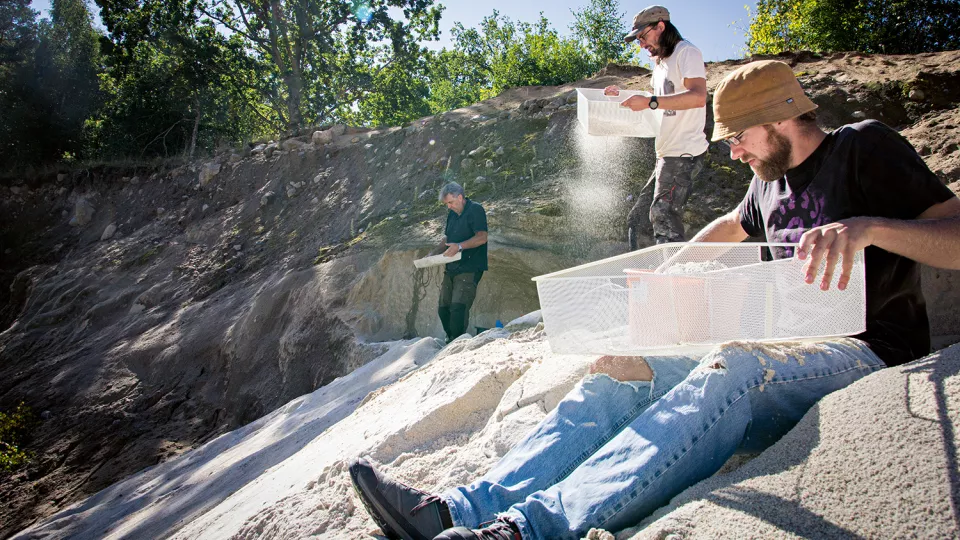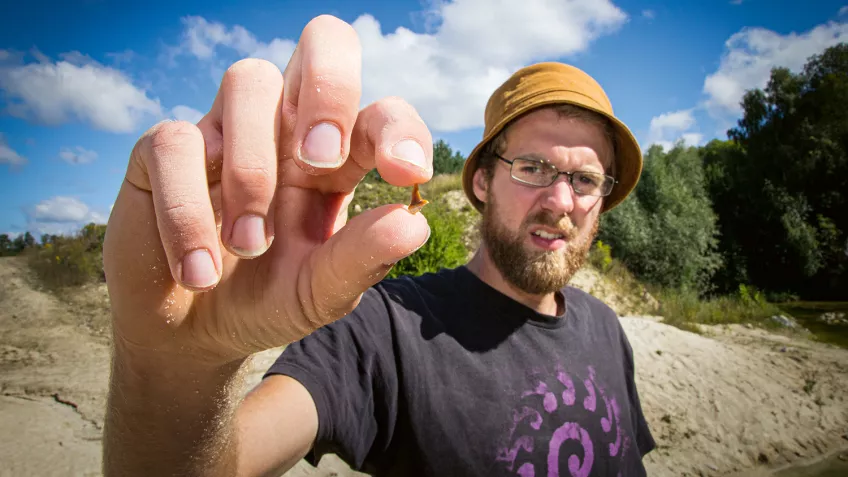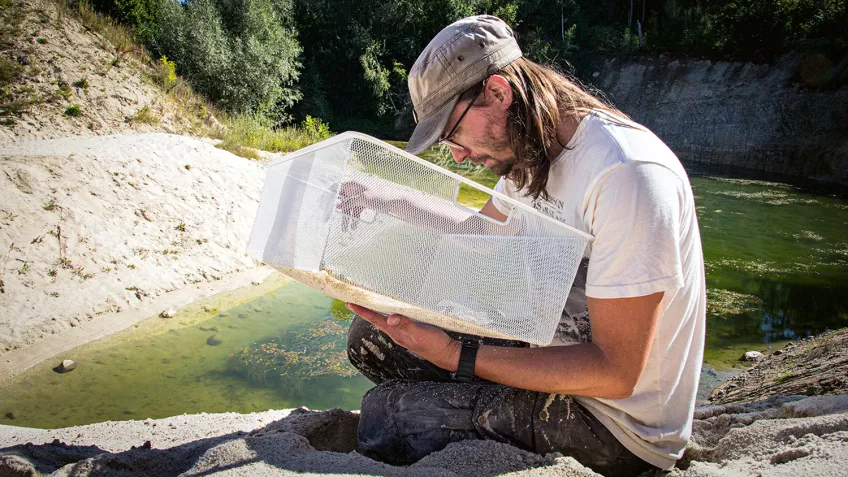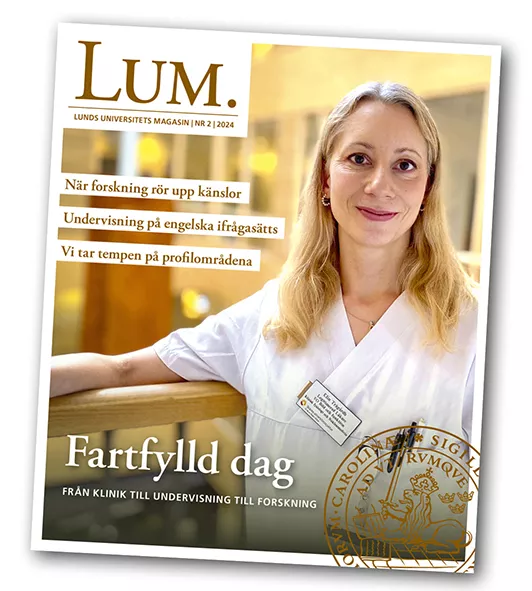The September sun blazes over the extensive chalk quarry outside the Skåne village of Vinslöv. On a little ledge near a bright blue pond stand two geology researchers, Anders Lindskog and Johan Pettersson, sifting sand through fine-meshed metal trays. A drop of perspiration emerges on Anders Lindskog’s forehead as
Like looking for a prehistoric elk
No. The mysterious fragment was not a new dinosaur tooth, only a piece of coprolite, or fossilised faeces. But thankfully there is an endless of supply of sand to dig up. Because it is here somewhere – the skeleton of a dinosaur that lived here during the Cretaceous Era. At that time, 84 million years ago, the landscape looked radically different. The location where the researchers are sifting for fossils was an archipelago with a Mediterranean climate. The dinosaur they are looking for died on the beach, swelled up in the heat and eventually floated out into the water and sank to the bottom of the sea.
“It’s a bit like diving into the Baltic Sea and searching for a prehistoric elk! But since we have found a dozen or so dinosaur teeth, we are convinced that an entire skeleton is hidden somewhere here”, says Anders Lindskog.
“This is a very meditative occupation. The fact that what I am doing can also be of interest to the researchers and the University is also great”, he says.
Suddenly Johan Pettersson calls out. He thinks he has found something interesting. But on closer analysis it turns out not to be a bone fragment from a dinosaur.
“You have to be patient. Search like hell and, in the end, you will find something”, he says smiling.
The quarry was home to prehistoric sea turtles and crocodiles
He puts his sifting tray aside and picks up a small plastic container of fossil remains from creatures including sea turtles, sharks and crocodiles. It is dizzying to imagine that this chalk pit in Skåne was once home to prehistoric animals. Johan Pettersson takes a drink of water and lets his gaze wander over the barren landscape.
“Our mysterious dinosaur was one of several species that lived here. It was related to the better-known Triceratops and was a very intriguing creature. You could describe it as a mixture between a cow, a lizard, a sheep and a parrot,” says Johan Pettersson.
He puts aside the container of fossils, opens a packet of cheese puffs and sits down on the ground next to Anders Lindskog and Tord Engfors. The rush of cars is audible from the nearby road. In the distance, you can hear birdsong and a dog barking. The dinosaur hunters’ conversation turns to the dizzying chronology.
“Even for me, working day to day with this, it is hard to imagine the chronology. Human beings as a species have been around for barely half a million years. And the dinosaur we are looking for is so much older than that”, says Anders Lindskog.





